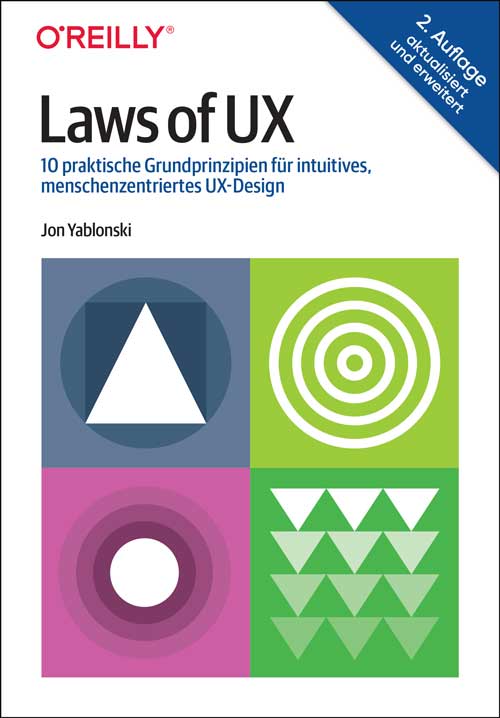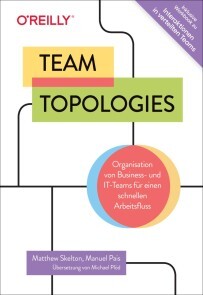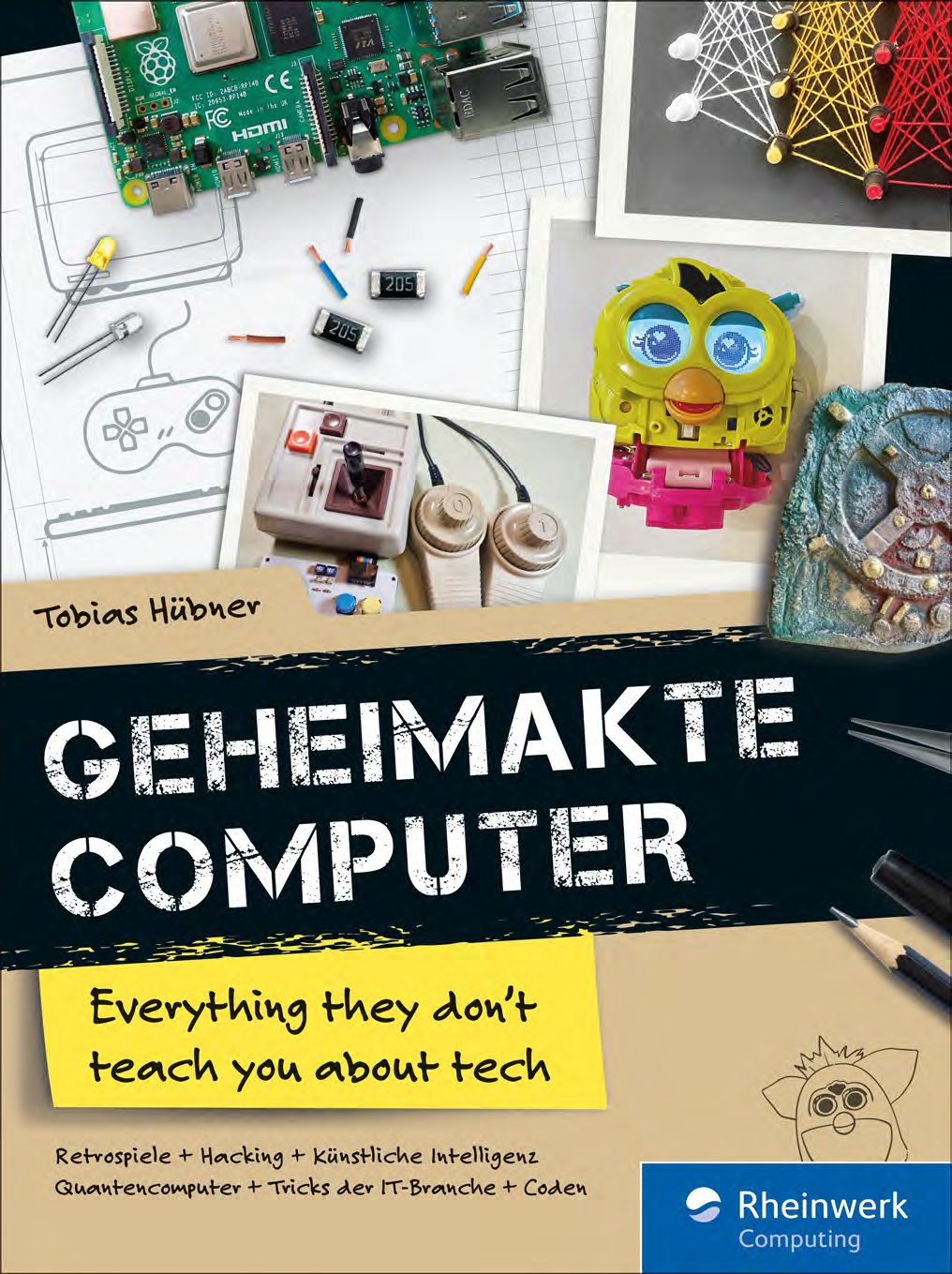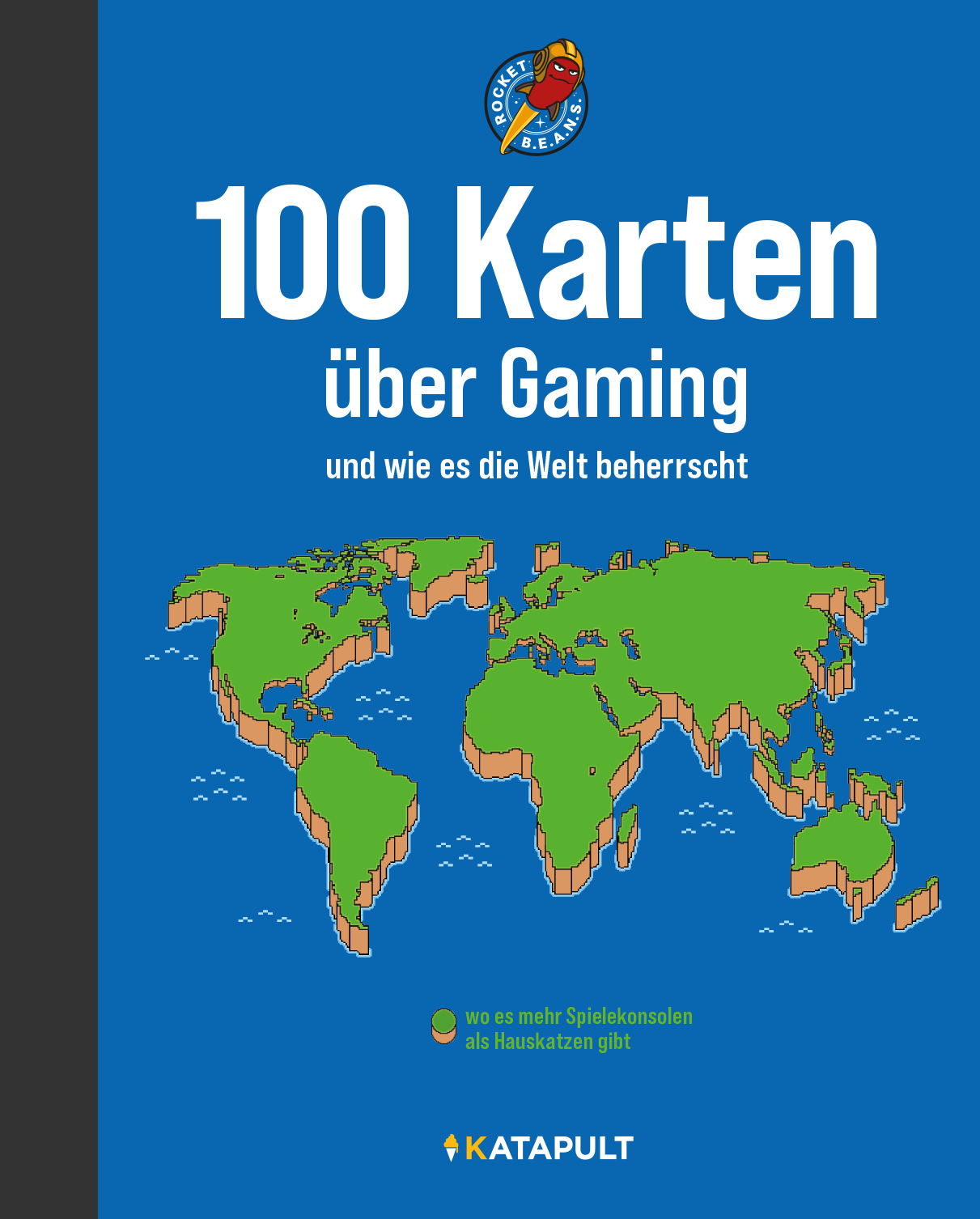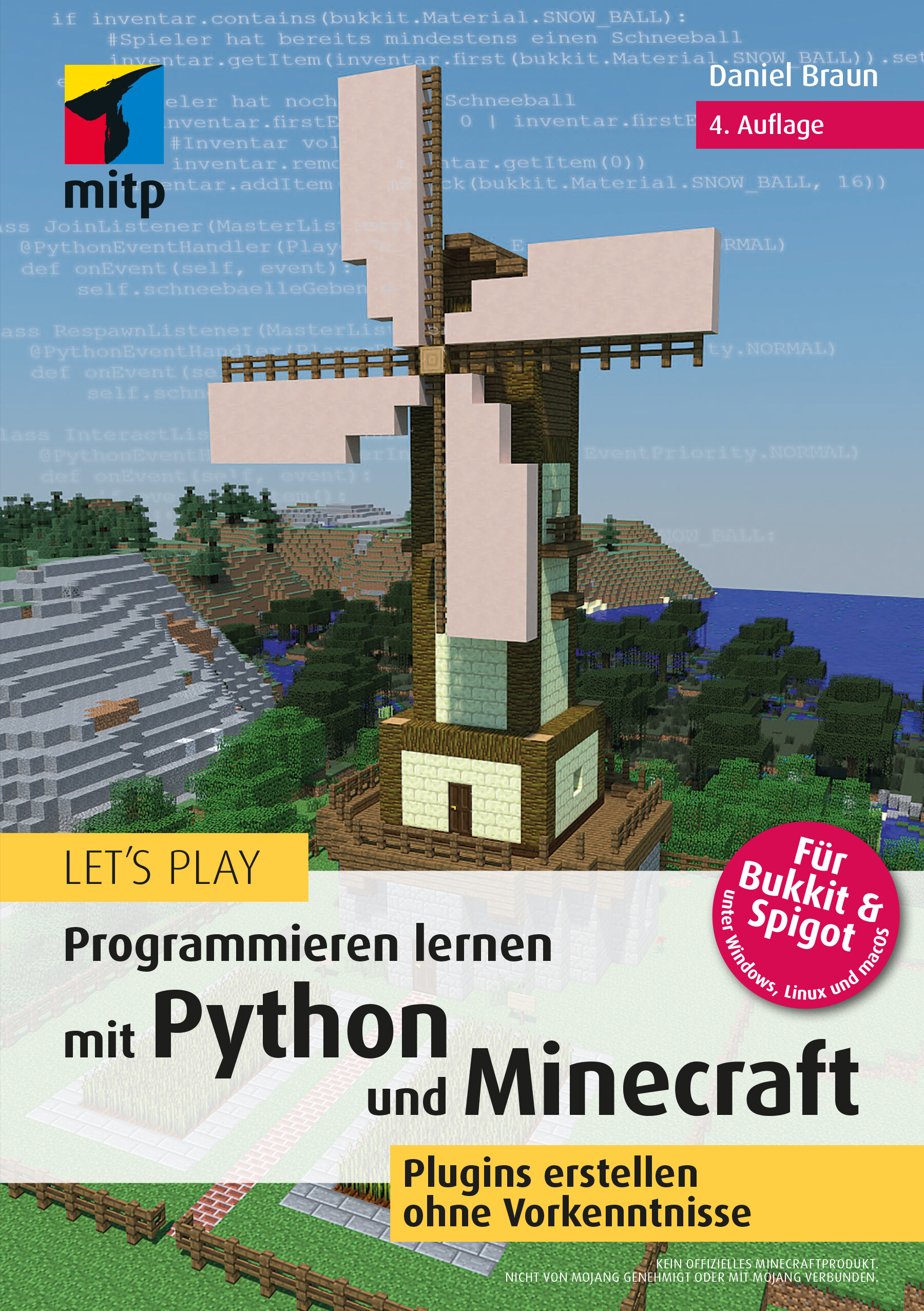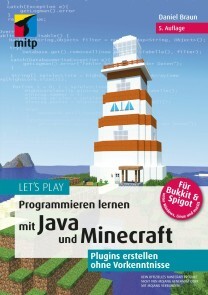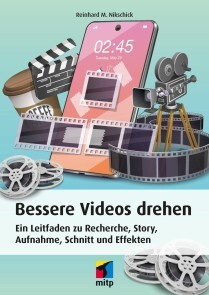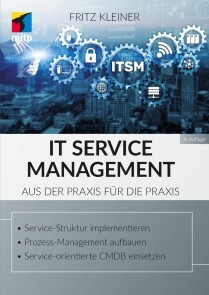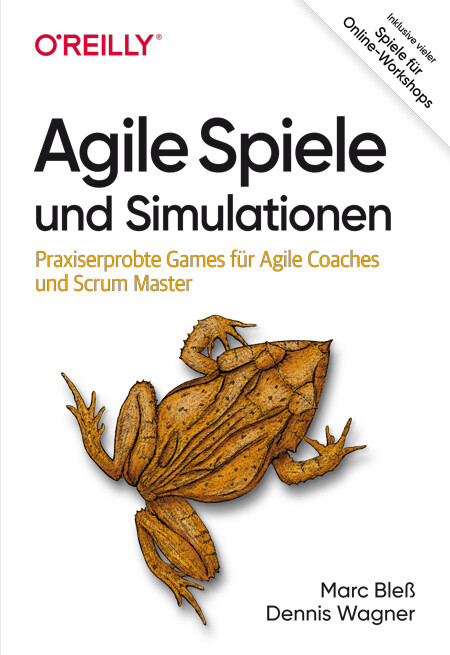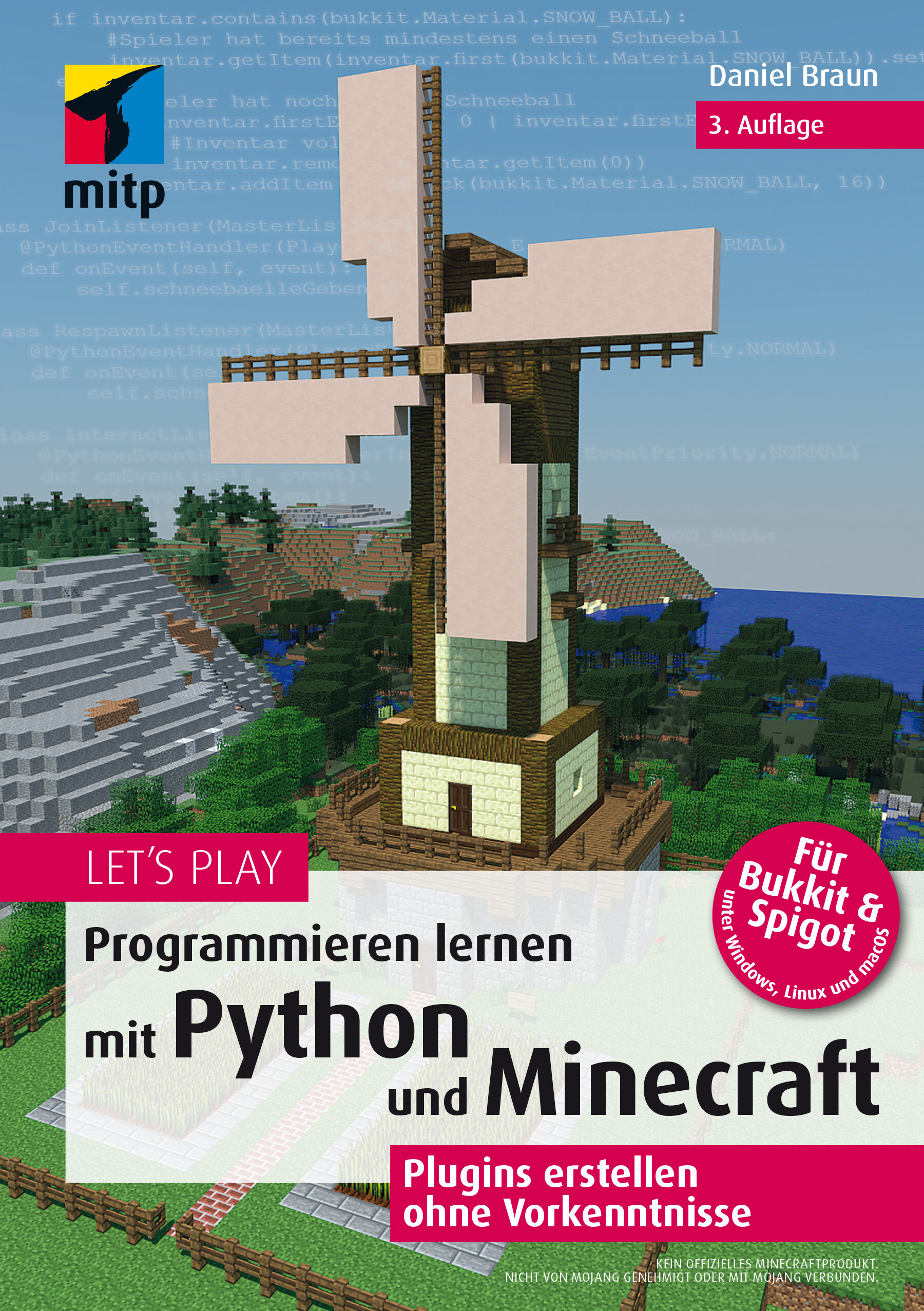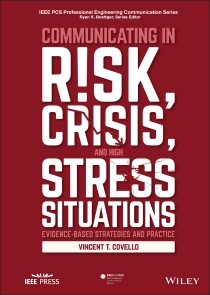Gaming
Neu
Laws of UX (2. Auflg.)
26,90 €*
Mit Psychologie zu besseren Produkten und ServicesJon Yablonski erklärt in diesem Buch, wie UX-Designer*innen Grundprinzipien aus der Psychologie nutzen können, um eine bessere User Experience zu generieren. Statt Benutzer*innen zu zwingen, sich an das Design eines Produkts anzupassen, hilft dieser praktische Leitfaden dabei, das Design danach auszurichten, wie Benutzer*innen sich verhalten und mit digitalen Schnittstellen interagieren. Auf diese Weise lässt sich ihre Nutzung einfacher und angenehmer gestalten.Dabei greift der Autor auf bewährte Prinzipien aus der psychologischen Forschung zurück und überträgt sie in die Welt des UX-Design: So sprechen wir beispielsweise einer App mit attraktivem Design mehr Kompetenz zu und verzeihen ihr eher Fehler. Oder wir erwarten von einem Onlineshop, dass der Kaufprozess so funktioniert, wie wir es von anderen Shops gewohnt sind. Außerdem können wir eine große Menge an Informationen besser speichern und verarbeiten, wenn sie in Chunks gegliedert sind, weshalb etwa Texte, die mithilfe von Überschriften und Absätzen gegliedert sind, eine höhere UX generieren als ein langer Fließtext, der die User überfordert.Jon Yablonski führt Sie zunächst an die verschiedenen Prinzipien heran und demonstriert sie an anschaulichen, einfach nachzuvollziehenden Beispielen. Dann lernen Sie, wie Sie diese Prinzipien praktisch für die eigene Arbeit und im Team nutzen können. Zusätzlich geht das Buch auch auf die ethischen Komponenten ein (Beispiele: Endlos-Scrollen, Like-Button).Leseprobe (PDF-Link)Über den Autor:Jon Yablonski ist ein multidisziplinärer Designer, Referent, Autor und Gestalter für digitale Medien mit Sitz in Detroit. Sein besonderes Interesse gilt der Schnittstelle zwischen User Experience Design und Frontend-Webentwicklung, und er verbindet diese beiden Disziplinen vielfach zu einem Hybridkonzept für digitale Problemlösungen. Wenn er nicht gerade Journey Maps und Prototypen erstellt, entwickelt Jon hilfreiche Ressourcen wie Laws of UX, Humane by Design oder das Web Field Manual. Gegenwärtig ist er als leitender Produktdesigner bei General Motors damit beschäftigt, die nächste Generation der Interaktivität im Fahrzeug zu definieren.
Neu
Spieleentwicklung mit Unity - Das umfassende Handbuch
49,90 €*
Spieleentwicklung mit Unity - Das umfassende Handbuch (2024).Unity ist die Plattform für die Spieleentwicklung – egal, ob du gerade einsteigst oder schon eine Karriere in der Games-Branche im Blick hast. Unity steckt hinter großen Games wie Among Us und Pokémon Go und wird in der Indie-Szene geliebt. Lerne die sehr mächtigen und vielfältigen Möglichkeiten kennen! Dieses Handbuch ist dafür der perfekte Begleiter. Von den Grundkonzepten der Engine über Prefabs und Scripts bis zum komplexen 3D-Spiel mit coolen Features wirst du nach und nach zum Profi. Also: Wenn du Unity meistern willst und etwas Zeit und Ehrgeiz mitbringst, dann geht die Reise hier los.So baust du deine Skills auf1. Einsteigen und los – und dann immer weiter lernenDieses Handbuch ist einstiegsfreundlich und umfassend. Autor Max zeigt dir von der Installation an, wie es geht, hält Praxisbeispiele bereit und hört auch bei anspruchsvollen Themen nicht auf, alles genau zu erklären.2. Praxis – mehr als BeispielprojekteMit den vielen Übungen im Buch trainierst du deine Skills. Du programmierst dabei nicht einfach Fertiges nach, sondern lernst die Konzepte, das Scripting mit C# und die Logik dahinter gründlich kennen. Bau dir ein immer besseres Repertoire auf und mach aus deinen eigenen Ideen spielbare Games!3. Professionell in 2D wie 3DOb in zwei oder drei Dimensionen: Übersichtliche UIs, robuster und sauberer Code, aufregende Spielewelten und realistische Effekte kommen nicht von ungefähr. Auch zu den Profi-Themen gibt es haufenweise Material zum Üben. Und wohin führt bekanntlich Übung? Genau – zur Meisterschaft!Aus dem Inhalt:Installation und erste SchritteAnimationen und SoundLebewesen automatisch navigierenKlassiker wie Pong, Flappy Bird und Tower Defense selbst entwickelnUI-Layouts optimierenDas Physik-System geschickt einsetzenScripting-Grundlagen mit C#Objektorientierung, Generics, LINQ u.v.m.Partikel und ModelleLeseprobe (PDF-Link)Über den Autor:Max Schlosser ist Masterstudent und wissenschaftlicher Mitarbeiter in der Medieninformatik an der Hochschule Mittweida und durch und durch Games-Fan.
Neu
The Next Level - Minecraften für Profis (5. Auflage)
24,90 €*
The Next Level - Minecraften für Profis. In 5., aktualisierter und überarbeiteter Auflage (2024)Der Survival-Modus ist keine Herausforderung mehr für dich? Du hast bereits ausgiebig gebaut, die Welt erforscht und die stärksten Monster besiegt – was soll da noch kommen? Es wird Zeit für das nächste Level! Erlebe ein neues Survival-Gefühl mit Ressourcenpaketen, Mods und völlig neuen Welten. Hebe ab in den Kreativ-Modus, importiere Bauwerke und gestalte eigene Welten mit dem Weltenpinsel. Werde schließlich zum Commander deiner Welt! Tobe dich mit den vielen Minecraft-Befehlen aus und stelle die Welt kreativ auf den Kopf. Zahlreiche Tipps und Beispiele begleiten dich auf deinem Weg zu eigenen Abenteuer-Maps mit selbst programmierten Geschicklichkeits-Parcours und Dungeons.Kein offizielles Minecraft-Produkt. Nicht von Mojang genehmigt oder mit Mojang verbunden.So wirst du zum Minecraft-Profi1. Bring neue Frische ins SpielBlicke hinter die Kulissen und erfahre, wie das Spiel die Illusion von Raum, Zeit und Leben erzeugt. Steige in die Programm-Ressourcen ein und verbessere deine Welten mit Skins, Texturen und Geräuschen. Erweitere dein Spiel und installiere Mods, Shader und alternative Launcher.2. Gestalte deine WeltenErstelle Spezialwelten, experimentiere mit Vergangenheit und Zukunft und greife mit Datenpaketen in die Weltgenerierung ein. Vom einfachen Ändern der Beutetabellen bis zur Gestaltung eigener Dimensionen ist alles dabei. Lerne, wie du Wege und Berge einfach in die Landschaft malst und wie du Minigames und Abenteuer-Welten baust.3. Das Spiel ist größer als du denkstMit den Minecraft-Befehlen entpuppt sich das Spiel als riesiger Kreativbaukasten. Manipuliere Blöcke, Gegenstände und Kreaturen, verbiege ihre Eigenschaften und lasse sie nach Belieben erscheinen und verschwinden. Von Einsteiger-Befehlen, die Zeit und Wetter ändern, bis zu komplexen Experten-Befehlen ist alles abgedeckt und wird Schritt für Schritt mit vielen Beispielen erklärt.Aus dem InhaltSkins für deine SpielfigurRessourcen- und Datenpakete schnürenEigene Mods generierenSpezialversionen von MinecraftWelten aus dem Internet installierenProfi-Tools zur WeltgestaltungProgrammieren mit Minecraft-BefehlenBlöcke und Kreaturen verändernJSON-Dateien und NBT-DatenEigene Abenteuerspiele gestaltenExtra-Kapitel für BedrockReferenz mit allen Minecraft-BefehlenLeseprobe (PDF-Link)
AmigaOS 3.2 - Das Handbuch
29,90 €*
Ein praktischer Wegweiser durch das Amiga-Betriebssystem für Wieder- und Neueinsteiger, Fortgeschrittene und Profis.“AmigaOS 3.2 – Das Handbuch” ist das umfassende Nachschlagewerk zum aktuellen Amiga-Betriebssystem. Das Buch stellt das Betriebssystem von A bis Z vor und gibt Tipps und Tricks zur effizienten Nutzung, einfach und verständlich erklärt.Das Buch richtet sich an ambitionierte Anwender, die die Grundlagen des Betriebssystems beherrschen, tiefere Techniken erlernen und einen Einblick in die Möglichkeiten zur erweiterten Nutzung des Systems erhalten wollen. Und es soll die Lust auf die Bedienung und den Wiedereinstieg wecken und den Grundlagen-Weg über das Betriebssystem hinaus ebnen.Sie erhalten einen umfassenden Überblick über das AmigaOS 3.2 einschließlich der Updates bis 3.2.2.1: Wie wird das Betriebssystem richtig und einfach installiert, welche Einstellungen sind für eine grundlegende Bedienung nötig, wozu dienen die unterschiedlichen Tools, Commodities und Utilities? Darüber hinaus geben wir einen tiefen Einblick in die Shell des Amigas mit sämtlichen Befehlen und Varianten. Außerdem erfahren Sie beispielsweise alles über die Nutzung und Funktion von einzelnen Startsequenzen, AmigaGuide-System, Shortcuts und Fehlercodes oder ARexx. Schließlich liefert das Buch auch einen Überblick über die reinen Betriebssystemfunktionen hinaus, unter anderem zum Anschluss an das Internet, zum Datenaustausch und zum sinnvollen Ausbau der Hardware mit Erweiterungen. Das Buch wird Sie also mit vielen Detail-Erklärungen und Schritt-für-Schritt-Anleitungen in die Lage versetzen, das AmigaOS 3.2 Ihren Anforderungen und Erwartungen entsprechend einzusetzen und zu erweitern.Aus dem Inhalt:Installation auf Classic, Emulation und MiniEinbau der Kickstart-ROMs in alle AmigasGrundlagen des BetriebssystemsSystemoptimierung mit PrefsTools, Utilities und Commodities richtig nutzenDie Shell: Alle Befehle im Detail erklärtPower-User: Skripte, ARexx und Co.Nächste Schritte: Internet, Datenübertragung und USBAmiga-Erweiterung: Hardware und SoftwareService: Tipps und Tricks, Shortcuts, Glossar u.v.m.
Let´s Play. Dein Redstone-Guide
19,99 €*
MIT POSTER: DIE WICHTIGSTEN REDSTONE-REZEPTE* DEIN HAUS AUFRÜSTEN MIT TÜRÖFFNERN, ZAHLENSCHLÖSSERN, GEHEIMGÄNGEN, AUFZÜGEN UND FALLEN* GEGENSTÄNDE AUF SCHIENEN TRANSPORTIEREN: VON KREUZUNGEN UND WEICHEN ÜBER EINE U-BAHN BIS ZU EINEM AUTOMATISCHEN GÜTERBAHNHOF* NOCH TRICKREICHER BAUEN: KANONEN, SCHIEẞSTAND, AUTOMATISCHE FARMEN UND LAGERHÄUSER, ZAHLENDISPLAY, KANÄLE UND LUFTSCHIFFEMit Redstone-Schaltungen hebst du deine Minecraft-Skills auf ein neues Level! In diesem Buch erfährst du Schritt für Schritt, wie du raffinierte Fallen und andere ausgeklügelte Mechanismen baust.Redstone eröffnet dir ganz neue Spiel-Möglichkeiten. Du kannst dein Haus mit Schlössern, Geheimgängen und Aufzügen aufrüsten und mit raffinierten TNT- oder Wasserfallen vor Gegnern schützen. Mithilfe von automatischen Farmen versorgst du dich mit Essen, Schießpulver und mehr. Mit Schienen oder Bootskanälen kannst du Gegenstände oder Spieler schnell über weite Strecken transportieren. Wenn dir das immer noch nicht genug ist, baust du dir eigene Motoren, um richtige Luftschiffe anzutreiben oder einen vollautomatischen Schießstand für ein spezielles Bogen-Training!Die Anleitungen für all das und noch viel mehr sind im Buch ganz genau beschrieben, sodass du sie einfach nachbauen kannst. So wirst du im Handumdrehen zum Redstone-Profi!AUS DEM INHALT:* Redstone-Grundlagen* Liste aller wichtigen Redstone-Crafting-Rezepte* Haustechnik:* Schlösser* versteckte Eingänge* Aufzüge* Fallen und Waffen:* TNT-Fallen * Selbstschussanlagen * Wasserfallen* Kanonen* Farmen und Lager:* Automatische Farmen* Monsterfarmen* Lagerhaus* Automatischer Ofen* Transport und Fortbewegung:* U-Bahn* Güterbahnhof* Bootskanäle und Schiffshebewerk* Luftschiffe* Schießstand für Zielscheiben und bewegliche Ziele* Zahlendisplay und ZählmaschineDaniel Braun ist seit den ersten Tagen Minecraft-Anhänger und kennt als Profi alle Facetten des Spiels. Er hat bereits mehrere Bücher zu Minecraft geschrieben.
Team Topologies
34,90 €*
Effektive Softwareteams sind für jedes Unternehmen unerlässlich, um kontinuierlich und nachhaltig Werte zu schaffen. Team Topologies ist ein praktisches, schrittweise anpassbares Modell für die Gestaltung von Organisationen und die Interaktion von Teams. Es basiert auf vier Teamtypen und drei Formen der Teaminteraktion und versteht Teams als entscheidenden Faktor der Wertschöpfung. Mit der technologischen und organisatorischenReife einer Organisation werden sich Teamstrukturen und Kommunikationswege kontinuierlich weiterentwickeln.Im Bestseller Team Topologies präsentieren die IT-Berater Matthew Skelton und Manuel Pais eine grundlegende Weiterentwicklung des Organisationsdesigns für die Entwicklung von Software. Anhand von Fallstudien und Beispielen aus der Industrie beschreiben sie eine klar definierte Vorgehensweise für die Interaktion und das Zusammenwirken von Teams. Ihre Methode trägt entscheidend dazu bei, die Architektur von Software klarer und nachhaltiger zu gestalten und Probleme zwischen Teams in wertvolle Signale für eine sich selbst lenkende Organisation zu verwandeln.• Verstehen Sie das Conway'sche Gesetz und seine Bedeutung• Vereinfachen Sie mit vier Teamtypen die Organisation moderner Softwareteams• Gestalten Sie Teamgrenzen – und -APIs und reduzieren Sie die kognitive Belastung Ihrer Entwicklungsteams• Verbessern Sie durch drei Formen der Interaktion die Bereitstellung von Software• Nutzen Sie den Betrieb der Software als sensorischen Input zur Selbststeuerung Ihrer OrganisationMatthew Skelton entwickelt, implementiert und betreibt seit 1998 kommerzielle Software-Systeme und hat für Unternehmen wie die London Stock Exchange, GlaxoSmithKline, FT.com, LexisNexis und die britische Regierung gearbeitet. Matthew ist Head of Consulting bei Conflux (confluxdigital.net) und Co-Autor der Bücher Continuous Delivery with Windows and .NET (2016) und Team Guide to Software Operability (2016). Matthew hat einen BSc in Computerwissenschaften und Kybernetik von der University of Reading, einen MSc in Neurowissenschaften von der University of Oxford und einen MA in Musik von der Open University. Er ist ein Chartered Engineer (CEng) in Großbritannien. In seiner Freizeit spielt Matthew Trompete, singt in Chören, schreibt Musik und genießt das Trailrunning.Manuel Pais ist ein unabhängiger DevOps- und Continuous Delivery-Berater, der sich auf Team-Design, Praktiken und Arbeitsfluss konzentriert. Er hilft Organisationen bei der Definition und Einführung von DevOps und Continuous Delivery (sowohl aus technischer als auch aus menschlicher Sicht) durch strategische Bewertungen, praktische Workshops und Coaching. Manuel ist Co-Autor von Team Guide to Software Releasability (2018).
Neu
Geheimakte Computer
24,90 €*
Spiel, Spaß und ... IT-Wissen?! Ein Computerbuch zum Schmökern.Der Informatikunterricht ist dir zu trocken? Du bist auf der Suche nach den wirklich spannenden Themen? Halt! Psssst! Dann wirf doch einen Blick in die »Geheimakte Computer«. Sie ist dein Einstieg in die große weite IT-Welt. Hier erfährst du alles, was dich rund um den Computer wirklich interessiert: Bastelprojekte, Computerspiele, Programmierung und nützliches Wissen zu spannenden Themen wie Hacking, Digitalisierung und Sicherheit, künstliche Intelligenz und interessante Persönlichkeiten der Branche.Genau nach deinem GeschmackDu magst Computer und Spielekonsolen? Aber zocken allein reicht dir nicht aus? Dann wage einen Blick in die »Geheimakte Computer« und erfahre mehr über die faszinierende IT-Welt. Durch spannende Projekte, Geschichten und Aufgaben lernst du Dinge, die dich wirklich interessieren.IT-Themen – unterhaltsam erklärtHacking, künstliche Intelligenz, Computerspiele, Digitalisierung oder die miesen Tricks der Tech-Industrie: hier erfährst du über alle Themen, was dir die Schule nicht vermitteln kann. Das Buch weckt deine Neugier und ermöglicht eine intensive Beschäftigung mit der digitalen Welt.Mehr als ein LesebuchHier wird dir nicht nur wichtiges Wissen rund um den Computer vermittelt. Tobias Hübner gibt dir mit kreativen Maker-Projekten, Programmier-Challenges und unterhaltsamen Hintergrundgeschichten Einblicke in die Welt der Informatik, die dir Programmiereinführungen und der Informatikunterricht nicht bieten können.Aus dem Inhalt:Das kreativste Werkzeug der WeltSo funktioniert ein ComputerAlte Technik neu entdeckenGames – besser als ihr RufEine Spielkonsole mit dem Raspberry PiWie schützt du dich vor Hackertricks?Ist künstliche Intelligenz gefährlich?Digitalisierung – Pro und ContraDie fiesen Tricks der Tech-IndustrieVision: Die Zukunft des ComputersLeseprobe (PDF-Link)Über den Autor:Tobias Hübner setzt sich seit über 15 Jahren als Lehrer, Autor, Dozent und IT-Trainer für digitale Bildung ein und wurde für seine kreativen Ideen mehrfach ausgezeichnet, u. a. vom Bundesfamilienministerium und auf der Frankfurter Buchmesse.
Neu
Einstieg in Unity (4. Auflage)
29,90 €*
Einstieg in Unity - 2D- und 3D-Spiele entwickeln. 4. aktualisierte Auflage, 2023. Eigene Spiele entwickeln – mit diesem Buch und der genialen Game Engine Unity ist das kein Problem! Von der ersten Scene bis zum komplexen Multiplayer-Spiel zeigt Ihnen Erfolgsautor Thomas Theis, wie es geht. Sie brauchen keine Vorkenntnisse mitzubringen: Dank dem integrierten C#-Programmierkurs lernen Sie alle Objekte und Befehle direkt so kennen, wie Sie in Unity-Skripten aussehen. Ob es um Zusammenstöße, Flugkurven, Explosionen oder die richtige Perspektive geht: Lernen Sie mit 2D- und 3D-Spielen, wie Sie die mächtigen Werkzeuge nutzen und Ihre eigenen Ideen umsetzen.Aus dem Inhalt Unity installierenProjekte, Scenes und Assets verwaltenFlummi oder Stahlkugel? Objekteigenschaften festlegenFertige Bausteine entdecken und einsetzenSkripte schreiben und gut strukturierenSound und Animation hinzufügenMit Kameras und Perspektiven umgehenJump&Run, Breakout, Multiplayer, Shooter, Geschicklichkeitsspiel, Gedächtnistraining, Rennen, Adventure u. v. m.Leseprobe (PDF-Link)
Neu
100 Karten über Gaming
28,00 €*
Spielekonsolen sind beliebtere Mitbewohner als Katzen. Super Mario ist gefragter als Karl Marx. Und die Verleihung der Game Awards gucken sich sechsmal so viele Menschen an wie die der Oscars. Und KATAPULT feuert den besten Kartenatlas ab, den es je gab! Gemeinsam mit den Rocket Beans, einem der größten deutschsprachigen Creator-Kollektive zum Thema Videospiele, beamen sie Leser:innen und Spieler:innen in die Gaming-Welt – die längst die echte beherrscht: Welches Entwicklerstudio ist 2,5-mal so viel wert wie Islands Bruttoinlandsprodukt? In welchem Spiel kannst du dein eigenes Haus finden? Und warum ist die Playstation 3 für das US-Militär so wichtig?Leseprobe (PDF-Link)
Commodore - The Inside Story (dt. Fassung)
35,00 €*
Jetzt endlich in deutscher Übersetzung erhältlich: 30 unerzählte Geschichten über einen Computergiganten.Commodore - The Inside Story entführt die Leser auf eine Reise durch die aufregende Welt von Commodore, dem legendären Technologieunternehmen, das die Computerrevolution maßgeblich geprägt hat – von den bescheidenen Anfängen über den Aufstieg zur unangefochtenen Ikone der Heimcomputer-Ära bis hin zum finalen Crash des Unternehmens durch fatales Missmanagement.Dieses fesselnde Buch bietet nicht nur eine umfassende Darstellung der Entstehung von Commodore mit seinen revolutionären Computermodellen C64, PET und Amiga sowie den vielen gescheiterten Entwicklungen, sondern enthüllt auch die faszinierenden Geschichten der Visionäre, Ingenieure und Entwickler, die das Unternehmen zu dem gemacht haben, was es war.17 der packenden Kapitel stammen direkt von David John Pleasance, dem einstigen Geschäftsführer von Commodore UK. Seine präzisen Schilderungen und viele persönliche Fotos geben exklusive Details und eine intime Perspektive auf die Ereignisse preis.Ehemalige Commodore-Legenden wie RJ Mical, Dave Haynie, Gail Wellington oder Peter Kittel erzählen in 13 weiteren, umfassenden Kapiteln sehr persönlich über ihre bewegte Zeit bei dem amerikanischen Heimcomputergiganten der 80er Jahre. Diese außergewöhnlichen Geschichten gewähren einen tiefen Einblick in die Kultur, die Innovationen und die Leidenschaft, die Commodore geprägt haben.Commodore - The Inside Story ist die ultimative Hommage an eine Ära, die die Computerwelt für immer verändert hat. Mit seinen tiefgehenden Einblicken, fesselnden Anekdoten und den persönlichen Beiträgen von Industrielegenden begeistert David John Pleasance seine Leser und versetzt sie zurück in die goldenen Zeiten der Heimcomputer.Aus dem Inhalt:Teil 1: The Inside StoryAm Anfang …Commodore UK − Die ersten fünf MonateCommodore CorbyZwischenspiel 1: Spirit of the StonesMaidenhead, Teil 1: Wir verkaufen keine Computer, sondern TräumeMaidenhead, Teil 2: Das Händlerbonus−ProgrammCommodore Electronics Limited: Basel, SchweizZwischenspiel 2: Commodore NiederlandeCommodore Inc.: West Chester, Pennsylvania, USAEine Komödie der Fehler: Unser illustrer Anführer, Mehdi AliZwischenspiel 3: Irving GouldDie Markteinführung des CD32Die SCI Amiga 1200 HerstellungssageZwischenspiel 4: Der PC Week GerichtsprozessManagement BuyoutZwischenspiel 5: Chelsea FC Trikot−SponsoringNach CommodoreTeil 2: Erinnerungen an CommodoreRJ Mical: Eine weitere unerzählte Amiga−GeschichteDave Haynie: RUNTim Chaney: Commodore UK − Die frühen TageGail Wellington: Erinnerungen an die softe SeitePeter Kittel: Meine Zeit bei Commodore DeutschlandBeth Richard: Entwickle viel, veröffentliche wenigMiguel De Gracia: Erinnerungen eines jungen RekrutenJoe Benzing: Erinnerungen an CommodoreFrançois Lionet: Wie Amiga mein Leben verändert hatWim Meulders: Tod durch Management, Kunden und UserKieron Sumner: Der Nutzen ist allesStephen Jones: Ein Liebesbrief an AROSCarlo Pastore: Die Geschichte des CommodoreSchon im englischen Original recht wild getextet und mittelmäßig übersetzt, ist ”The Inside Story” höchst subjektiv, aber durchgehend informativ und spannend. Dass es im farbig bebilderten Hardcover mehr um persönliche Highlights und Events als um sachliche Geschichtschronik geht, werten wir eher als Stärke, denn Schwäche: Hier schreiben nicht Journalisten, sondern damalige Manager und Macher – mal selbstkritisch, mal euphorisch.- Winnie Forster auf MANIAC.deÜber den Autor:Mit einer Karriere von mehr als 45 Jahren in der Computerbranche ist der Erfolg von David John Pleasance legendär – es wird geschätzt, dass er für den Verkauf von etwa 2,25 Millionen Computern direkt verantwortlich war.Während seines einflussreichen Wirkens bei Commodore, das die Niederlassungen in Großbritannien, der Schweiz (verantwortlich für 35 Länder) und den USA umfasste, hat David langfristiger Partnerschaften mit weltweit führenden Publishern von Spielen und Produktivitätssoftware gebildet, immer mindestens einen Schritt vor der Konkurrenz. Er hat Maßstäbe im Marketing gesetzt und ist speziell für seine bahnbrechende Idee, kombinierte Computer- und Softwarepakete auf den Markt zu bringen, bekannt geworden.Kein anderer ist besser qualifiziert, diese fesselnde, unglaubliche (aber wahre) Geschichte über das Missmanagement eines globalen Computergigangen zu erzählen.
Kryptografie in der Praxis
46,90 €*
Eine Einführung in die bewährten Tools, Frameworks und Protokolle. Moderne Kryptografie kompetent vermittelt.Die Kryptografie ist die wesentliche Grundlage der IT-Sicherheit. Um den Angreifern auf Ihre Systeme einen Schritt voraus zu sein, müssen Sie die Tools, Frameworks und Protokolle verstehen, die Ihre Netzwerke und Anwendungen schützen.Dieses Buch führt in einfacher Sprache und mit anschaulichen Illustrationen in Authentifizierung, Verschlüsselung, Signaturen, Geheimhaltung und andere Kryptografiekonzepte ein. Es enthüllt die kryptografischen Techniken, die die Sicherheit von Web-APIs, die Registrierung und Anmeldung von Benutzern und sogar die Blockchain bestimmen. Sie erfahren, wie diese Techniken moderne Sicherheit ermöglichen und wie Sie sie in Ihren eigenen Projekten anwenden können. Neben den modernen Methoden nimmt das Buch auch die Zukunft der Kryptografie vorweg und geht auf neue und innovative Entwicklungen wie Kryptowährungen und Post-Quantum-Kryptografie ein. Alle Techniken sind vollständig mit Diagrammen und Beispielen illustriert, sodass Sie leicht erkennen können, wie sie in die Praxis umgesetzt werden können.»Mit der richtigen Balance aus Theorie und Praxis vermittelt der Autor genau das, was Softwareschaffende über Kryptografie wissen müssen. Viele kleine Übungen helfen ihnen, von der durchaus anspruchsvollen Lektüre zu profitieren.« - Maik Schmidt, c't 17/23Über den Autor:David Wong ist leitender Kryptografie-Ingenieur bei O(1) Labs und arbeitet an der Kryptowährung Mina. Davor war er Sicherheitsverantwortlicher für die Kryptowährung Diem (vormals bekannt als Libra) bei Novi, Facebook, und davor Sicherheitsberater bei der NCC Group im Bereich Kryptografiedienste.Im Laufe seiner Karriere hat David Wong an mehreren öffentlich finanzierten Open-Source-Audits teilgenommen, beispielsweise an OpenSSL und Let’s Encrypt. Er war Sprecher auf verschiedenen Konferenzen, einschließlich Black Hat und DEF CON, und hat in einem regelmäßig stattfindenden Kryptografiekurs bei Black Hat unterrichtet. Hervorzuheben sind seine Beiträge zu Standards wie TLS 1.3 und zum Noise Protocol Framework. Er hat Schwachstellen in vielen Systemen gefunden, einschließlich CVE-2016-3959 in der Golang-Standardbibliothek, CVE-2018-12404, CVE-2018-19608, CVE-2018-16868, CVE-2018-16869 und CVE-2018-16870 in verschiedenen TLS-Bibliotheken.Unter anderem ist er Autor des Disco-Protokolls (www.discocrypto.com und www.embeddeddisco.com) und des Decentralized Application Security Project für Smart Contracts (www.dasp.co). Zu seinen Forschungen gehören Cache-Angriffe auf RSA (http://cat.eyalro.net), ein auf QUIC basierendes Protokoll (https://eprint.iacr.org/2019/028), Timing-Angriffe auf ECDSA (https://eprint.iacr.org/2015/839) oder Hintertüren in Diffie-Hellman (https://eprint.iacr.org/2016/644). Aktuell finden Sie ihn in seinem Blog unter www.cryptologie.net.
Programmieren lernen mit Python und Minecraft (4. Auflg.)
24,99 €*
Minecraft-Plugins erstellen ohne Vorkenntnisse in aktueller 4. Auflage aus März 2023. Im heise Shop verfügbar als gedruckte oder digitale Version.Du spielst schon lange Minecraft und denkst, du hast schon alles gesehen? Kennst du schon das Feuerschwert, den Enderbogen oder den Spielmodus »Schneeballschlacht«? Du willst auf Knopfdruck Türme, Mauern oder sogar ganze Häuser bauen? Vollautomatisch auf Geschehnisse in der Spielwelt reagieren? Mit eigenen Plugins kannst du all das und noch viel mehr entdecken und ganz nebenbei auch noch programmieren lernen.Python ist für Programmiereinsteiger besonders leicht zu lernen. Daniel Braun zeigt dir, wie du mit Python und Bukkit oder Spigot Erweiterungen für Minecraft programmierst, sogenannte Plugins, die du dann zusammen mit deinen Freunden auf deinem eigenen Minecraft-Server ausprobieren kannst. Dafür sind keine Vorkenntnisse erforderlich, du lernst alles von Anfang an.Nach dem Programmieren einfacher Chat-Befehle wirst du coole Plugins zum Bauen erstellen, so dass mit einem einzigen Befehl sofort z.B. ein fertiges Haus oder eine Kugel vor dir steht.Außerdem erfährst du, wie deine Plugins automatisch auf Geschehnisse in der Spielwelt reagieren können.Du kannst auch eigene Crafting-Rezepte entwerfen, um z.B. mächtige neue Waffen zu kreieren wie das Feuerschwert, das alles in Brand setzt, worauf es trifft.Am Ende lernst du sogar, wie du eigene Spielmodi entwickeln kannst, also ein Spiel im Spiel. Ob eine Schneeballschlacht mit Highscore-Liste oder ein Wettsammeln mit Belohnung für den Sieger, hier ist jede Menge Spaß garantiert.Für das alles brauchst du keine Vorkenntnisse, nur Spaß am Programmieren. Es beginnt mit ganz einfachen Beispielen, aber mit jedem Kapitel lernst du mehr Möglichkeiten kennen, um Minecraft nach deinen Wünschen anzupassen. Am Ende kannst du richtig in Python programmieren und deiner Kreativität sind keine Grenzen mehr gesetzt, um deine eigene Minecraft-Welt zu erschaffen.Geeignet für Windows, Linux und macOSAus dem Inhalt:Bukkit und Spigot installieren und einrichtenEigene Befehle definieren und Chat-Nachrichten versendenPython-Grundlagen: Variablen, Schleifen, Verzweigungen, Funktionen, Klassen und ObjekteHäuser, Kreise und Kugeln bauenSchilder errichten und beliebig beschriftenPlugins programmieren, die auf Veränderungen in der Welt reagierenEigene Crafting-Rezepte erstellenInformationen dauerhaft speichernEigene Spielmodi entwickeln wie z.B. eine Schneeballschlacht oder ein SammelspielUmfangreiche Referenz zu allen ProgrammierbefehlenLeseprobe (PDF-Link)
Let‘s Play.Programmieren lernen mit Java und Minecraft
24,99 €*
* FÜR BUKKIT UND SPIGOT* ERSCHAFFE DEINE EIGENE WELT: MÄCHTIGE NEUE WAFFEN ERSTELLEN WIE Z.B. EIN FEUERSCHWERT, AUF KNOPFDRUCK TÜRME UND GANZE HÄUSER BAUEN, AUTOMATISCH AUF VERÄNDERUNGEN IN DER WELT REAGIEREN* NEUE CRAFTING-REZEPTE UND EIGENE SPIELMODI ENTWICKELN WIE Z.B. EINE SCHNEEBALLSCHLACHT MIT HIGHSCORE-LISTE* MIT UMFANGREICHER REFERENZ ZU ALLEN PROGRAMMIERBEFEHLENDu spielst schon lange Minecraft und denkst, du hast schon alles gesehen? Kennst du schon das Feuerschwert, den Enderbogen oder den Spielmodus »Schneeballschlacht«? Du willst auf Knopfdruck Türme, Mauern oder sogar ganze Häuser bauen? Vollautomatisch auf Geschehnisse in der Spielwelt reagieren? Mit eigenen Plugins kannst du all das und noch viel mehr entdecken und ganz nebenbei auch noch programmieren lernen.Daniel Braun zeigt dir, wie du mit Java und Bukkit oder Spigot Erweiterungen für Minecraft programmierst, sogenannte Plugins, die du dann zusammen mit deinen Freunden auf deinem eigenen Minecraft-Server ausprobieren kannst. Dafür sind keine Vorkenntnisse erforderlich, du lernst alles von Anfang an.Nach dem Programmieren einfacher Chat-Befehle wirst du coole Plugins zum Bauen erstellen, so dass mit einem einzigen Befehl sofort z.B. ein fertiges Haus oder eine Kugel vor dir steht. Außerdem erfährst du, wie deine Plugins automatisch auf Geschehnisse in der Spielwelt reagieren können.Du kannst auch eigene Crafting-Rezepte entwerfen, um z.B. mächtige neue Waffen zu kreieren wie das Feuerschwert, das alles in Brand setzt, worauf es trifft. Am Ende lernst du sogar, wie du eigene Spielmodi entwickeln kannst, also ein Spiel im Spiel. Ob eine Schneeballschlacht mit Highscore-Liste oder ein Wettsammeln mit Belohnung für den Sieger, hier ist jede Menge Spaß garantiert.Für das alles brauchst du keine Vorkenntnisse, nur Spaß am Programmieren. Es beginnt mit ganz einfachen Beispielen, aber mit jedem Kapitel lernst du mehr Möglichkeiten kennen, um Minecraft nach deinen Wünschen anzupassen. Am Ende kannst du richtig in Java programmieren, um deine eigene Minecraft-Welt zu erschaffen. So sind deiner eigenen Kreativität keine Grenzen mehr gesetzt.AUS DEM INHALT:* Eigenen Minecraft-Server mit Bukkit oder Spigot installieren und einrichten* Eigene Befehle definieren und Chat-Nachrichten versenden* Java-Grundlagen: Variablen, Schleifen, Verzweigungen, Funktionen, Klassen und Objekte* Häuser, Kreise und Kugeln bauen* Schilder errichten und beliebig beschriften* Plugins programmieren, die auf Veränderungen in der Welt reagieren* Eigene Crafting-Rezepte erstellen* Informationen dauerhaft speichern* Eigene Spielmodi entwickeln wie z.B. eine Schneeballschlacht oder ein Sammelspiel* Umfangreiche Referenz zu allen ProgrammierbefehlenDaniel Braun ist seit den ersten Tagen Minecraft-Anhänger und kennt als Profi alle Facetten des Spiels. Er hat bereits mehrere Bücher zu Minecraft geschrieben.
Bessere Videos drehen
24,99 €*
Mitreißende Videos mit dem Handy oder der Cam: von der Idee bis zum fertig geschnittenen Film Technik, Szenenführung, Kameraperspektive, Schnitt und Effekte gekonnt einsetzen Viel Wissenswertes zur Rechtslage und zum YouTube-Upload Der Multimedia-Experte Reinhard Nikschick zeigt dir, wie du dein kreatives Potenzial für einen Video-Dreh voll entfaltest sowie strukturiert und versiert an die Arbeit gehst. Von den technischen Grundlagen über die Ausgestaltung der Idee und Kniffe der Kameraführung bis hin zum Schnitt erfährst du, was du zum Erstellen eines qualitativ hochwertigen Videos benötigst. Viele Tipps zu den Besonderheiten beim Filmen von Interviews oder der nachträglichen Audio-Bearbeitung helfen dir, typische Fehler von vorneherein zu vermeiden. Mit dem Sinn für die optimale Szenenanordnung und interessanten Effekten wirst du deine Zuschauer für dein Video begeistern. Hilfreiche Tipps zur Rechtslage und zum Upload bei YouTube runden das Buch ab. Aus dem Inhalt: Technische Voraussetzungen für den Video-Dreh Bildformate, Bildauflösung, Bildpunkte Ideen generieren und in interessante Geschichten verwandeln Hilfsmittel für ein schlüssiges Video-Konzept Einstellungsgrößen der Kamera und ihre Wirkung verstehen Bewährte Szenenreihenfolge verinnerlichen Verschiedene Perspektiven einnehmen Ideen zu Drehorten, Requisiten und Kleidung Datensicherung auf Dreh: in der Cloud oder auf dem Laptop Videoschnitt mit dem kostenlosen Schnittprogramm Kdenlive Besonderheiten bei Interviews und Kommentaren Audio fürs Video aufbereiten Videos mit Titeltext, Bildkorrekturen und Effekte wie z.B. Chroma-Key-Technik verbessern Rechtsfragen beachten Videos bei YouTube hochladen Für Windows verfasst, aber auch für Mac- und Linux-User geeignet.Reinhard M. Nikschick ist Multimedia-Produzent und Toningenieur an der Hochschule für Film und Fernsehen Potsdam Babelsberg (Filmuniversität). Als Autor sowie Regisseur produziert er Videos für Unternehmen und Bildungseinrichtungen. Er arbeitete zudem als freier Mitarbeiter beim NDR.
IT Service Management
49,99 €*
* KONKRETE HILFESTELLUNGEN ZUR EFFEKTIVEN EINFÜHRUNG EINES IT SERVICE MANAGEMENTS* IT-PROZESSE ETABLIEREN SOWIE DIENSTLEISTUNGEN MESSEN UND AUSWERTEN* MIT VIELEN PRAKTISCHEN BEISPIELEN UND ANSCHAULICHEN GRAFIKENFritz Kleiner zeigt in dieser aktualisierten Neuauflage, wie Sie IT Service Management ganzheitlich in einem Unternehmen einführen und betreiben können. Anhand vieler Praxisbeispiele erfahren Sie, wie Sie IT-Dienstleistungen standardisieren, IT Service Management in der Führungsebene verankern oder Business IT Services bilden. Besondere Schwerpunkte sind dabei u.a. das Etablieren der Prozesse des IT Service Managements wie Service Level Management, Configuration Management oder Requirement Management.Mit diesem Handbuch verstehen Sie das IT Service Management-Konzept von Grund auf und werden es weitgehend erfolgreich selbstständig im Unternehmen etablieren können.* +27 Jahre Erfahrung von ITSM inkl. Tool-Einführungen* +31 Prozesse/Fähigkeiten der IT* +117 Vorlagen und Vorgaben für Lieferobjekte* +175 Mögliche Prinzipien für ProzesseZIELGRUPPE:* IT-Leiter* IT Service Manager* IT-Dienstleistungserbringer* IT-Berater * IT-Fachpersonal* Informatik-Dozenten* Informatik-StudentenFRITZ KLEINER ist CEO der Firma Futureways GmbH und hat sich auf die Beratung und Lehre im Bereich des IT Service Managements spezialisiert. Er hat rund 30 Jahre Erfahrung im Bereich der Informatik, die er in zahlreichen nationalen und internationalen Kundenmandaten im Outsourcing, Versicherungs-, Banken-, Pharma- und Verwaltungs-Umfeld als Managing Senior Consultant und Principal erwarb.
Spielkonsolen und Heimcomputer 1972 bis 2022 (5. Auflage)
32,90 €*
50 Jahre Bildschirmspaß und digitale Action, chronologisch und fundiert in Klartext, Technik-Tabellen und über 800 Fotos.Die stark erweiterte und aktualisierte Neuauflage des beliebten Fachbuchs zu Videospiel-Hardware zeigt alle Konsolen, Handhelds und Computer aus Amerika, Japan und Europa, präsentiert klassische Software in authentischen Pixeln, nennt Hintergründe und historische Facts. 550 Traumgeräte, Millionenseller von Atari VCS über Commodore Amiga und SNES zu PS5 und Steam Deck, aber auch Entgleisungen und exotische Varianten präsentiert Spielkonsolen und Heimcomputer in durchgehend farbigen Kapiteln und ausführlichen Anhängen - für Alle, die ihr Leben lang spielen, sammeln und wissen wollen. Eine Zeitreise durch die Spielepochen, von der elektromechanischen Urzeit in die Ultra-HD-Gegenwart und von dort in die VR-Zukunft! Über 500 Traumgeräte, Millionenseller vom Commodore 64 zum iPad, vom Atari-Telespiel zur Xbox, und ebenso Flops, Entgleisungen und exotische Varianten präsentiert Spielkonsolen und Heimcomputer in durchgehend farbigen Kapiteln und ausführlichen Anhängen – für alle, die ihr Leben lang spielen, sammeln und wissen wollen. Das Buch wird gelobt als „geeignetes Nachschlagewerk“ und „empfehlens-werte Lektüre“ (c‘t), als „sehr verständlich (...) sehr unterhaltsam“ (Gamestar) oder einfach als „Ass“ (ComputerBILDSpiele) und „Pflichtlektüre“ (PlayZone), und wächst von einst 144 auf 288 Seiten: Eine Zeitreise durch die Spielepochen, von der elektromechanischen Urzeit bis in die Ultra-HD- und VR-Zukunft!Der Autor Winnie Forster, Publizist und Fachmann für digitale Medien, sitzt seit 1982 an der Tastatur, seit 1990 in der Computer- und Videospielbranche. Er war leitender Redakteur beim legendären PowerPlay-Magazin, Mitbegründer von Video Games und – als Redaktionsleiter des Fachverlages Cybermedia – des Multiformat-Magazins Man!ac, das er 1995 ins Netz bringt. Im 21. Jahrhundert arbeitet und spielt Forster am bayerischen Ammerse.Der Autor Winnie Forster, Publizist und Fachmann für digitale Medien, sitzt seit 1982 an der Tastatur, seit 1990 in der Computer- und Videospielbranche. Er war leitender Redakteur beim legendären PowerPlay-Magazin, Mitbegründer von Video Games und – als Redaktionsleiter des Fachverlages Cybermedia – des Multiformat-Magazins Man!ac, das er 1995 ins Netz bringt. Im 21. Jahrhundert arbeitet und spielt Forster am bayerischen Ammersee.
Programmieren lernen in der Minecraft-Welt. Let's Code!
19,90 €*
Programmieren lernen in der Minecraft-Welt: Erwecke die Roboter-Schildkröte zum Leben!Willkommen in TurtleCity! Du hast nicht nur ein Buch aufgeschlagen, du bist auch in Minecraft unterwegs und lernst dort Programmieren: Eine Robo-Schildkröte folgt genau deinen Befehlen. Du lässt sie verrückte Sachen bauen, nach Schätzen graben, und zusammen geht ihr so manche Challenge an.Für Kinder und Jugendliche ab 8 Jahren, online oder offline nutzbar. Eine Minecraft-Java-Lizenz wird benötigt, Vorkenntnisse nicht. Die Minecraft-Erweiterung mit der Schildkröte ist kostenlos und leicht zu installieren. Los geht's!Aus dem Inhalt:Installation nach AnleitungWas die Schildkröte alles kannBau mir ein ...Solange, bis ...Wenn ..., dann ...Verschachtelte SchleifenBaumfäller, Schürf-Roboter und andere nützliche Helfer programmierenDer Weg aus dem LabyrinthProgramme speichern und wieder ladenLeseprobe (PDF-Link)
Agile Spiele und Simulationen
29,90 €*
Praxiserprobte Games für Agile Coaches und Scrum Master. Inklusive vieler Spiele für Online-WorkshopsDer umfassende Spiele-Werkzeugkoffer für alle, die Workshops zu agilen Methoden moderieren.Spiele und Simulationen unterstützen Agile Coaches und Scrum Master optimal dabei, agile Prinzipien und Praktiken in Workshops und Trainings zu veranschaulichen – und sie machen Spaß! Mittlerweile sind sie fester Bestandteil des Werkzeugkoffers von agilen Moderatorinnen und Moderatoren. Dieses Buch beschreibt über 70 Spiele, die sich in der Praxis besonders bewährt haben.Marc Bleß und Dennis Wagner – beide seit vielen Jahren als Agile Coaches tätig – erläutern zunächst, was bei der Moderation von agilen Spielen zu beachten ist und wann welches Spiel eingesetzt werden kann. Sie zeigen außerdem, wie die meisten dieser Spiele auch in Online-Workshops genutzt werden können und was dabei grundsätzlich zu beachten ist.Vorgestellt werden Spiele aus diesen Kategorien:Vermittlung von agilen PrinzipienSimulationen von agilen PraktikenKommunikation und Social DynamicsEröffnung und Abschluss eines TrainingsEnergizer und Auflockerungen für zwischendurchNeu: Technical Skills – Spiele für die Vermittlung agiler EntwicklungspraktikenDas Buch ist eine Erweiterung des beliebten Taschenbuchs »Agile Spiele – kurz & gut«. Es enthält zahlreiche neue spannende Games und jetzt auch viele farbige Abbildungen. Alle Spielanleitungen wurden überarbeitet und ergänzt. Die Autoren beschreiben Vorbereitung, benötigtes Material, Ablauf und Nachbereitung jedes Spiels sowie mögliche Stolperfallen. Die vielen konkreten Tipps und Beispiele aus der Praxis garantieren, dass Spielfreude aufkommt und du erfolgreiche Workshops und Trainings durchführst.Autoren:Marc Bleß, Dennis WagnerMarc Bleß hat über 20 Jahre Erfahrung als Agile Coach, Scrum Master, Softwareentwickler und Führungskraft. Seine Leidenschaft ist die schnelle und nachhaltige Verbesserung von Teams und Organisationen. Als ausgebildeter Solution-Focused Coach und Certified Enterprise Coach (CEC) begleitet Marc Unternehmen auf allen Ebenen – vom Top-Level-Management bis zu einzelnen Teams – bei der Einführung agiler Entwicklungsmethoden und der Umsetzung agiler Werte, Prinzipien und Praktiken.Dennis Wagner ist, seit er mit 17 Jahren sein erstes eigenes Softwareprodukt verkauft hat, der Entwicklung verschrieben. In so unterschiedlichen Rollen wie Architekt, Team Lead, Entwickler oder Product Manager zeigte er viele Jahre erfolgreich Wege auf, wie man Software besser entwickelt. Seit er vor mehr als zehn Jahren XP und Scrum kennenlernte, ist er Agilist aus Überzeugung. Heute hilft er Teams, Führungskräften und Organisationen als Full Stack Agile Coach, ihr Potential zu entdecken und zu entwickeln.Zielgruppe:Scrum MasterAgile CoachesFührungskräfte, die Workshops zu agilen Methoden moderieren
Die Geheimnisse von Monkey Island
24,90 €*
Unterhaltsam, kurzweilig, informativ: „Die Geheimnisse von Monkey Island – Auf Kapertour mit Pixel-Piraten“ ist DAS Buch für Fans der legendären Point’n’Click-Adventure-Reihe „Monkey Island“. Das Buch erschien zeitgleich zum neuen Teil von Monkey Island, der erstmals nach 30 Jahren wieder vom ursprünglichen Entwickler Ron Gilbert kreiert wurde."Macht, was ihr wollt, aber macht coole Sachen!" - George Lucas am 1. Mai 1982. Das war das einzige Ziel, das George Lucas seinen zwanzig jungen, ehrgeizigen, lustigen und schlecht frisierten Game-Designern als Rahmen für die Entwicklung von eigenen Computerspielen setzte. Lucasfilm Games und später LucasArts wurde in der Folgezeit zu einer legendären Spieleschmiede, auch durch die Veröffentlichung von The Secret of Monkey Island™ im Jahr 1990. Das bekannteste Point‘n‘Click-Adventure verdankt seinen legendären Ruf seiner herrlich anachronistischen Welt voller bunter Piraten und seinem von Monty Python inspirierten Humor, aber auch schlicht und einfach der Tatsache, dass es ein komplettes Genre revolutioniert hat. Dieses Buch ist eine Hommage an die Abenteuer von Guybrush Threepwood, einem genialen Piraten. Aber es möchte Ihnen auch in vielen Details schildern, wie Monkey Island durch seine einzigartige Erzählkunst zum Meilenstein in der Videospielgeschichte wurde.Darüber hinaus bietet es die Gelegenheit, auf die turbulente Historie von LucasArts und Telltale Games zurückzublicken, Rezepte für Voodoo-Grog zu entdecken, interaktive Piratenreggae-Songs zu lernen, auf einer mondänen Party unter 40-jährigen Geeks zu glänzen und Sprüche zu erkunden, die so scharf wie ein Entermesser sind (nützlich für Duelle oder Geburtstagsfeiern).
Inhalt:Vorwort von Larry Ahern: Mäandern auf der Affeninsel
Prolog: Das Abenteuer laut LucasArts
Einleitung
Kapitel 1: Lucasfilm Games
Kapitel 2: Von der interaktiven Erzählung zu Point&Click
Kapitel 3: Spielmotor SCUMM
Kapitel 4: Neuerfindung des Adventures
Kapitel 5: The Secret of Monkey Island
Kapitel 6: Von Lucasfilm Games zu LucasArts
Kapitel 7: Monkey Island 2: LeChuck's Revenge
Kapitel 8: iMUSE! Interaktive Reggae-Musik, Mann!
Kapitel 9: Das Ende einer Ära
Kapitel 10: The Curse of Monkey Island
Kapitel 11: Curse of Monkey Island: Der Film
Kapitel 12: Escape from Monkey Island
Kapitel 13: Das Adventure-Game ist tot!
Kapitel 14: Telltale Games
Kapitel 15: Tales of Monkey Island
Kapitel 16: Monkey Island Special Edition
Kapitel 17: Leben und Sterben von LucasArts
Kapitel 18: Die Geheimnisse von Monkey Island
Kapitel 19: Das Erbe von Monkey Island
Kapitel 20: Ron Gilbert vs. Disney
Kapitel 21: Return to Monkey Island
Kapitel 22: Ron Gilbert enthüllt das wahre Geheimnis von Monkey Island!!!
Kapitel 23: Finale: So long...
Anhang 1: Beleidigungsduell
Anhang 2: Mojo-Credits
Anhang 3: Plank of Love
Lean UX (3. Auflage)
34,90 €*
Mit agilen Teams erfolgreiche Produkte designen
Lean UX ist ein Synonym für modernes Produktdesign und -entwicklung. Durch die Kombination von menschenzentriertem Design, agilen Arbeitsweisen und einem ausgeprägten Geschäftssinn machen Designer:innen, Produktmanager:innen, Entwickler:innen und Scrum Master auf der ganzen Welt Lean UX heute zum führenden Ansatz für digitale Produktteams.In der dritten Auflage dieses preisgekrönten Buches helfen Ihnen die Autoren Jeff Gothelf und Josh Seiden, sich auf das Produkterlebnis und nicht auf die Ergebnisse zu konzentrieren. Sie lernen Taktiken für die Integration von User Experience Design, Produktentdeckung, agilen Methoden und Produktmanagement kennen. Und Sie erfahren, wie Sie Ihr Design in kurzen, iterativen Zyklen vorantreiben können, um zu ermitteln, was für Unternehmen und Benutzer:innen am besten funktioniert. Lean UX führt Sie durch diesen Wandel – zum Besseren.Erleichtern Sie Ihrem Team den Lean-UX-Prozess mit dem Lean-UX-Canvas.Stellen Sie sicher, dass jedes Projekt mit klaren kundenzentrierten Erfolgskriterien beginnt.Verstehen Sie die Rolle der Designer:innen in einem agilen Team.Stellen Sie sicher, dass die Designarbeit in jedem Sprint stattfindet.Bauen Sie Produktentdeckung in die »Geschwindigkeit« Ihres Teams ein.Zielgruppe: UX-/Produktdesigner*innenProduktmanager*innenScrum MasterManager*innen von UX-TeamsAutoren: Jeff Gothelf unterstützt Unternehmen bei der Entwicklung besserer Produkte und Führungskräfte bei der Entwicklung einer Kultur, die bessere Produkte hervorbringt. Er begann als Software-Designer und arbeitet heute als Coach, Berater und Keynote-Speaker, der Unternehmen dabei hilft, die Lücken zwischen geschäftlicher Agilität, digitaler Transformation, Produktmanagement und menschenzentriertem Design zu schließen.Josh Seiden ist Designer, Autor und Coach. Er hilft Teams dabei, echte Probleme für Kunden zu lösen und Mehrwert für Unternehmen zu schaffen. Als Coach hilft er Teams, ihre Arbeitsweise zu verbessern, eine effektivere Zusammenarbeit aufzubauen und die Reise der Produktentwicklung zu genießen.
Autodesk Fusion 360 (4. Auflg.)
32,99 €*
Praxiswissen für Konstruktion, 3D-Druck und CNC. 4. Auflage 2022.Mit dem cloudbasierten CAD/CAM-Programmsystem Fusion 360 lassen sich schnell und einfach professionelle 3D-Modelle und 2D-Fertigungszeichnungen erstellen und für CNC-Bearbeitungen und 3D-Druck vorbereiten.Dieses Buch bietet eine praktische Einführung in die wichtigsten Funktionen der umfangreichen Software. Dabei setzt der Autor folgende Themenschwerpunkte:3D-Modelle zweidimensional skizzieren und aus der Skizze heraus erzeugenVolumenkörper-, Flächen-, Freiform- und Netzmodellierung2D-Fertigungszeichnungen mit Beschriftung und Stücklisten ableitenBauteile und Baugruppen rendern, animieren und Mechanismen simulierenErstellen von Fertigungsdaten für 3D-Drucker und CNC-Bearbeitungsmaschinen3D-Druck und CNC-Bearbeitungen (wie CNC-Fräsen, CNC-Drehen und Laserschneiden)Elektronik-Schaltpläne entwerfen und Leiterplatten-Layouts in 2D und 3D ableitenAlle Funktionen und Arbeitsweisen werden Schritt für Schritt demonstriert und eingeübt. Zahlreiche praktische Beispiele helfen, die verschiedenen Techniken nachzuvollziehen und zu verinnerlichen. Nach der Lektüre dieses Buches sind Sie bestens gerüstet, individuelle 3D-Modelle sowie die entsprechenden Fertigungsdaten zu erstellen und eigene Projekte umzusetzen.Aus dem Inhalt: Installation und BenutzeroberflächeSkizzenerstellung3D-Modellierung mit Volumen, Flächen, Freiform-Elementen und NetzenAbleiten von ZeichnungenSimulationBaugruppen mit GelenkenAnimieren und RendernBlechkonstruktionen3D-Druck und CNC-Bearbeitungen (Fräsen, Drehen, Bohren und Schneiden)Schaltplan-Entwurf und Leiterplatten-Layout (2D/3D)Zahlreiche praktische BeispieleÜber den Autor:Detlef Ridder hat langjährige Erfahrung im Bereich CAD und bereits zahlreiche Bücher zu AutoCAD, Inventor, Revit und ArchiCAD veröffentlicht. Er gibt Schulungen zu diesen Programmen und zu CNC und weiß daher, welche Themen für Einsteiger besonders wichtig sind.Leseprobe (PDF-Link)
Varianten ab 32,00 €*
Programmieren lernen mit Python und Minecraft (3. Auflg.)
24,99 €*
Plugins erstellen ohne Vorkenntnisse, für Bukkit und Spigot. In aktualisierter 3. Auflage.Du spielst schon lange Minecraft und denkst, du hast schon alles gesehen? Kennst du schon das Feuerschwert, den Enderbogen oder den Spielmodus »Schneeballschlacht«? Du willst auf Knopfdruck Türme, Mauern oder sogar ganze Häuser bauen? Vollautomatisch auf Geschehnisse in der Spielwelt reagieren? Mit eigenen Plugins kannst du all das und noch viel mehr entdecken und ganz nebenbei auch noch programmieren lernen.Python ist für Programmiereinsteiger besonders leicht zu lernen. Daniel Braun zeigt dir, wie du mit Python und Bukkit oder Spigot Erweiterungen für Minecraft programmierst, sogenannte Plugins, die du dann zusammen mit deinen Freunden auf deinem eigenen Minecraft-Server ausprobieren kannst. Dafür sind keine Vorkenntnisse erforderlich, du lernst alles von Anfang an.Nach dem Programmieren einfacher Chat-Befehle wirst du coole Plugins zum Bauen erstellen, so dass mit einem einzigen Befehl sofort z.B. ein fertiges Haus oder eine Kugel vor dir steht. Außerdem erfährst du, wie deine Plugins automatisch auf Geschehnisse in der Spielwelt reagieren können.Du kannst auch eigene Crafting-Rezepte entwerfen, um z.B. mächtige neue Waffen zu kreieren wie das Feuerschwert, das alles in Brand setzt, worauf es trifft.Am Ende lernst du sogar, wie du eigene Spielmodi entwickeln kannst, also ein Spiel im Spiel. Ob eine Schneeballschlacht mit Highscore-Liste oder ein Wettsammeln mit Belohnung für den Sieger, hier ist jede Menge Spaß garantiert.Für das alles brauchst du keine Vorkenntnisse, nur Spaß am Programmieren. Es beginnt mit ganz einfachen Beispielen, aber mit jedem Kapitel lernst du mehr Möglichkeiten kennen, um Minecraft nach deinen Wünschen anzupassen. Am Ende kannst du richtig in Python programmieren und deiner Kreativität sind keine Grenzen mehr gesetzt, um deine eigene Minecraft-Welt zu erschaffen.Aus dem Inhalt:Bukkit und Spigot installieren und einrichtenEigene Befehle definieren und Chat-Nachrichten versendenPython-Grundlagen: Variablen, Schleifen, Verzweigungen, Funktionen, Klassen und ObjekteHäuser, Kreise und Kugeln bauenSchilder errichten und beliebig beschriftenPlugins programmieren, die auf Veränderungen in der Welt reagierenEigene Crafting-Rezepte erstellenInformationen dauerhaft speichernEigene Spielmodi entwickeln wie z.B. eine Schneeballschlacht oder ein SammelspielUmfangreiche Referenz zu allen ProgrammierbefehlenLeseprobe als PDF
Ada und Zangemann
16,90 €*
Ein Märchen über Software, Skateboards und Himbeereis. Ein Buch über den selbstbestimmten Umgang mit Technik.In einer riesigen Villa hoch oben über der Stadt lebt der berühmte Erfinder Zangemann. Erwachsene wie Kinder lieben seine Erfindungen und wollen sie unbedingt haben. Doch dann geschieht etwas: Zangemann kommt in die Stadt, um seine Erfindungen wieder einmal aus der Nähe zu betrachten und – RUMMS! – ein Kind fährt ihm mit seinem Skateboard gegen das Schienbein. Wutentbrannt trifft der Erfinder eine Entscheidung und dann passieren merkwürdige Dinge ... Aber das kluge Mädchen Ada durchschaut, was vor sich geht. Gemeinsam mit ihren Freund:innen schmiedet sie einen Plan.Das illustrierte Kinderbuch erzählt die Geschichte vom berühmten Erfinder Zangemann und dem Mädchen Ada, einer neugierigen Tüftlerin. Ada beginnt mit Hard- und Software zu experimentieren und erkennt dabei, wie wichtig der eigenständige, freie Umgang mit Software für sie und andere ist.Ein Buch für Kinder ab 6 Jahren, das Freude am Tüfteln vermittelt und zum selbstbestimmten Umgang mit Technik aufruft. Leseprobe 1 (PDF-Link)Leseprobe 2 (PDF-Link)Über die Autoren:Matthias Kirschner ist Präsident der FSFE. 1999 begann er, GNU/Linux zu nutzen und realisierte, dass Software tief in allen Bereichen unseres Lebens verwurzelt ist. Er ist davon überzeugt, dass diese Technik unsere Gesellschaft nicht einschränken, sondern sie befähigen muss. Seit 2004, während seines Studiums der Politik- und Verwaltungswissenschaft, engagiert er sich bei der FSFE und arbeitet dort seit 2009 Vollzeit.Er unterstützt unterschiedliche Organisationen, Unternehmen und die Öffentliche Verwaltung dabei, von Freier Software zu profitieren und er erklärt, wie die grundlegenden Rechte von Freier Software – das Recht sie zu verwenden, zu verstehen, zu verbreiten und zu verbessern – die Meinungsfreiheit, Pressefreiheit oder Privatsphäre fördern.Matthias ist im Advisory Board von unterschiedlichen Freien-Software-Organisationen, war Sachverständiger im Bundestag und anderen Gremien, gibt regelmäßig Interviews und hält Vorträge zum Thema Freie Software.Sandra Brandstätter ist österreichische Wahlberlinerin und arbeitet als Illustratorin, Comicautorin und Character Designerin für Trickfilme und -serien, zum Beispiel für die Serie „Trudes Tier“ (Sendung mit der Maus).Folgende ihrer Kinderbücher und -comics sind auch im Handel erhältlich: „Paula: Liebesbrief des Schreckens“ (Reprodukt Verlag/2016), „Ben & Teo: Zwei sind einer zuviel“ (Beltz & Gelberg/ Autor: Martin Baltscheit/2020).
Communicating in Risk, Crisis, and High Stress Situations: Evidence-Based Strategies and Practice
42,99 €*
COMMUNICATING IN R!SK, CRISIS, AND HIGH STRESS SITUATIONSLEARN THE UNIFYING PRINCIPLES BEHIND RISK, CRISIS, AND HIGH STRESS COMMUNICATION WITH THIS STATE-OF-THE-ART REFERENCE WRITTEN BY A MAJOR LEADER IN THE FIELDCommunicating in Risk, Crisis, and High Stress Situations: Evidence-Based Strategies and Practice is about communicating with people in the most challenging circumstances: high stress situations characterized by high risks and high stakes. The ability to communicate effectively in a high stress situation is an essential communication competency for managers, engineers, scientists, and professionals in every field who can be thrust into demanding situations complicated by stress. Whether you are confronting an external crisis, an internal emergency, or leading organizational change, this book was written for you. Communicating in Risk, Crisis, and High Stress Situations brings together in one resource proven scientific research with practical, hands-on guidance from a world leader in the field. The book covers such critical topics as trust, stakeholder engagement, misinformation, messaging, and audience perceptions in the context of stress. This book is uniquely readable, thorough, and useful, thanks to features that include:* Evidence-based theories and concepts that underlie and guide practice* Tools and guidelines for practical and effective planning and application* Experience-based advice for facing challenges posed by mainstream and social media * Provocative case studies that bring home the key principles and strategies* Illuminating case diaries that use the author’s breadth and depth of experience to create extraordinary learning opportunitiesThe book is a necessity for managers, engineers, scientists, and others who must communicate difficult technical concepts to a concerned public. It also belongs on the bookshelves of leaders and communicators in public and private sector organizations looking for a one-stop reference and evidence-based practical guide for communicating effectively in emotionally charged situations. Written by a highly successful academic, consultant, and trainer, the book is also designed as a resource for training and education. VINCENT T. COVELLO, PHD, is a leading expert in risk, crisis, and high stress communications. He is currently Director of the Center for Risk Communication in New York City, an organization that applies evidence-based knowledge to a wide range of high concern, high stakes situations. He has served as a senior adviser to the World Health Organization, the US Department of Health and Human Services, the US Environmental Protection Agency, the US Department of Agriculture, the US Centers for Disease Control and Prevention, and other national and international organizations. Over the past 40 years, Dr. Covello has published more than 150 scientific articles on risk, crisis, and high stress communications.A Note from the Series Editor xiiiAcknowledgments xvAuthor Biography xvii1 THE CRITICAL ROLE OF RISK, HIGH CONCERN, AND CRISIS COMMUNICATION 11.1 Case Diary: A Collision of Facts and Perceptions 21.2 What Will Readers Find in This Book? 31.3 Why You Will Use This Book 41.4 The Need for This Book – Now 51.4.1 New Literature, New Research 51.4.2 Changes in the Communications Landscape 61.4.3 Changes in Journalism and the Perception of Facts 71.4.4 Changes in Laws, Regulations, and Societal Expectations 71.4.5 Changes in Concerns about Health, Safety, and the Environment 71.4.6 Changes in Levels of Trust 71.4.7 Changes in the Global Political Environment 81.4.8 The COVID- 19 Pandemic and the Changed Communication Landscape 82 CORE CONCEPTS 112.1 Case Diary: Recognizing Change as a High Concern Issue 112.2 Defining the Concept and Term Risk 132.3 Defining the Concept and Term Risk Communication 142.4 Risk Communication and Its Relationship to Risk Analysis 172.5 Defining the Concepts and Terms High Concern and High Concern Communication 192.6 Defining the Concept and Term Crisis 222.7 Defining the Concept and Term Crisis Communication 242.8 Chapter Resources 25Endnotes 313 AN OVERVIEW OF RISK COMMUNICATION 333.1 Case Diary: Complex Issues Destroy Homes 333.2 Challenges and Difficulties Faced in Communicating Risk Information 353.2.1 Characteristics and Limitations of Scientific and Technical Data about Risks 353.2.2 Characteristics and Limitations of Spokespersons in Communicating Information about Risks 353.2.2.1 Case Study: “Go Hard, Go Early”: Risk Communication Lessons from New Zealand’s Response to COVID-19 373.2.3 Characteristics and Limitations of Risk Management Regulations and Standards 413.2.3.1 Debates and Disagreements 413.2.3.2 Limited Resources for Risk Assessment and Management 413.2.3.3 Underestimating the Difficulty of and Need for Risk Communication 423.2.3.4 Lack of Coordination and Collaboration 423.2.4 Characteristics and Limitations of Traditional Media Channels in Communicating Information about Risks 423.2.5 Characteristics and Limitations of Social Media Channels in Communicating Information about Risks 433.2.6 Characteristics and Limitations of People in their Ability to Evaluate and Interpret Risk Information 443.3 Changes in How the Brain Processes Information Under Conditions of High Stress 483.4 Risk Communication Theory 493.4.1 Trust Determination Theory 493.4.2 Negative Dominance Theory 503.4.3 Mental Noise Theory 503.4.4 Risk Perception Theory 503.5 Risk Communication Principles and Guidelines 553.5.1 Principle 1. Accept and Involve All Interested and Affected Persons as Legitimate Partners 553.5.2 Principle 2. Plan Carefully and Evaluate Performance 553.5.3 Principle 3. Listen to Your Audience 573.5.4 Principle 4. Be Honest, Frank, and Open 573.5.5 Principle 5. Coordinate and Collaborate with Other Credible Sources 583.5.6 Principle 6. Meet the Needs of Traditional and Social Media 583.5.7 Principle 7. Speak Clearly and with Compassion 583.6 Key Takeaway Concepts and Conclusions from this Overview Chapter 593.7 Chapter Resources 59Endnotes 664 DEVELOPMENT OF RISK COMMUNICATION THEORY AND PRACTICE 694.1 Case Diary: Origin Story 694.2 Introduction 704.2.1 Historical Phase 1: Presenting Risk Numbers 714.2.2 Historical Phase 2: Listening and Planning 714.2.3 Historical Phase 3: Stakeholder Engagement 724.2.4 Covello and Sandman’s Four Stages of Risk Communication 724.2.4.1 Stage 1: Ignore the Public 734.2.4.2 Stage 2: Explaining Risk Data Better 734.2.4.3 Stage 3: Stakeholder Engagement 774.2.4.4 Stage 4: Empowerment 784.3 Summary 794.4 Chapter Resources 79Endnotes 835 STAKEHOLDER ENGAGEMENT AND EMPOWERMENT 875.1 Case Diary: A Town Hall Public Meeting Goes Very Wrong 875.2 Introduction 895.3 Levels of Stakeholder Engagement 915.3.1 Types of Stakeholder Engagement 935.4 Benefits of Stakeholder Engagement 955.5 Limitations and Challenges of Stakeholder Engagement 965.6 Techniques and Approaches for Effective Stakeholder Engagement 975.7 Meetings with Stakeholders 1005.7.1 Town Hall Meetings 1015.7.2 Open House Meetings/Information Workshops 1025.7.3 Tips for Meetings with Stakeholders 1025.8 Chapter Resources 104Endnotes 1076 COMMUNICATING IN A CRISIS 1116.1 Case Diary: The Challenge of Partnership in a Crisis 1126.2 The Three Phases of a Crisis 1136.3 Communication in the Precrisis Preparedness Phase 1156.3.1 Precrisis Communication Activity: Identifying Potential Crises 1176.3.2 Case Study: The 2010 BP Deepwater Horizon Oil Spill 1186.3.3 Precrisis Communication Activity: Identify Goals and Objectives 1206.3.4 Precrisis Communication Activity: Develop a Crisis Communication Plan 1216.3.5 Precrisis Communication Activity: Identify, Train, and Test Crisis Communication Spokespersons 1246.3.6 Precrisis Communication Activity: Engaging Stakeholders 1246.3.7 Precrisis Communication Activity: Identifying Stakeholders’ Questions and Concerns 1266.3.8 Drafting Messages for Anticipated Stakeholder Questions and Concerns 1266.3.9 Precrisis Communication Activity: Conducting Exercises to Test the Crisis Communication Plan 1286.3.10 Precrisis Communication Activity: Incident Command System (ICS) and the Joint Information Center (JIC) 1296.4 Communications in the Crisis Response Phase 1306.4.1 Case Study: Lac-Mégantic Rail Tragedy 1346.4.2 Disaster and Emergency Warnings 1366.4.2.1 Designing Effective Warnings 1376.4.2.2 Steps in the Disaster and Emergency Warning Process 1376.5 Communicating Effectively about Blame, Accountability, and Responsibility 1396.6 Communicating an Apology 1406.6.1 Case Study: Maple Leaf Foods and the Listeria Food Contamination Crisis 1416.6.2 Case Study: Southwest Airlines Apology 1446.7 Communications in the Postcrisis Recovery Phase 1456.7.1 Case Study and Case Diary: New York City’s Communication Trials by Fire, from West Nile to 9/11 1466.7.2 Case Study: Johnson & Johnson and the Tylenol Tampering Case 1476.7.3 Case Study: Flint, Michigan and Contaminated Drinking Water 1496.8 Chapter Resources 151Endnotes 1597 FOUNDATIONAL PRINCIPLES: PERCEPTIONS, BIASES, AND INFORMATION FILTERS 1657.1 Case Diary: “A” Is for “Apples” 1657.2 Message Perception and Reception in High Concern Situations 1687.3 Message Filter Theory: A Set of Principles Drawn from the Behavioral and Neuroscience Literature 1697.4 Case Study: COVID- 19 and Risk Perception Factors 1717.4.1 Social Amplification Filters 1737.4.2 Mental Shortcut Filters 1747.4.3 Knowledge and Belief Filters 1767.4.4 Personality Filters 1777.4.5 Negative Dominance/Loss Aversion Filters 1777.5 Message Filters and the Brain 1797.6 Message Filters, Perceptions, and Models of Human Behavior 1797.7 Message Filters, Perceptions, and Persuasion 1807.8 Message Filters, Perceptions, and Ethics 1817.9 Message Filters and the Issue of Acceptable Risk 1827.9.1 Factors in Determining Acceptable Risk 1837.9.2 Strategies for Addressing Acceptable Risk 1847.10 The Message is in the Mind of the Receiver 1867.11 Chapter Resources 186Endnotes 1928 FOUNDATIONAL PRINCIPLES: TRUST, CULTURE, AND WORLDVIEWS 1978.1 Case Diary: A Disease Outbreak in Africa 1988.2 Trust Determination 2008.3 Characteristics and Attributes of Trust 2018.3.1 Trust and First Impressions 2038.3.2 Loss of Trust 2048.3.3 Gaining Trust 2068.3.3.1 Gaining Trust through Stakeholder Engagement 2068.3.3.2 Gaining Trust through Trust Transference 2068.3.3.3 Gaining Trust through Actions and Behavior 2078.4 Case Study: Trust and the Chernobyl Nuclear Power Plant Accident 2078.5 Case Diary: The Fukushima Japan Nuclear Power Plant Accident 2088.6 Gaining Trust in High- Stakes Negotiations 2108.7 Case Diary: Gaining Trust and the SARS Outbreak in Hong Kong 2118.8 Trust and Culture 2128.9 Cultural Competency 2128.9.1 Different Communication Styles 2138.9.2 Different Attitudes and Approaches toward Conflict 2148.9.3 Different Nonverbal Communication 2148.9.4 Different Attitudes and Approaches to Decision Making 2148.9.5 Different Attitudes and Approaches toward Information Disclosure 2158.9.6 Different Attitudes and Approaches to Knowing 2158.9.7 Different Attitudes and Approaches toward Conversation and Discourse 2158.9.8 Different Attitudes and Approaches toward the Use of Humor 2158.10 Risk Perceptions, Trust, and Cultural Theory 2158.11 Risk Perceptions, Trust, and Worldviews 2178.12 Case Diary: Fame, Family, and Fear in Public Health Communications 2188.13 Chapter Resources 221Endnotes 2279 BEST PRACTICES FOR MESSAGE DEVELOPMENT IN HIGH CONCERN SITUATIONS 2319.1 Case Diary: Mapping Through a Maze of COVID Confusion 2319.2 Introduction 2329.3 Crafting Messages in the Context of Stress and High Concern Decision- Making 2339.3.1 Trust Determination and Messaging in High-Stress Situations 2339.3.1.1 The CCO Best Practice 2339.3.2 Impaired Comprehension and Messaging in High-Stress Situations 2349.3.3 Negative Dominance and Messaging in High-Stress Situations 2349.3.4 Emotional Impact and Messaging in High-Stress Situations 2359.3.4.1 Case Study: Hoarding Toilet Paper at the Outset of the 2020 COVID-19 Pandemic 2369.4 Message Mapping 2389.4.1 Benefits of Message Maps 2389.4.2 Message Maps and the Brain 2419.4.3 The Development of Message Mapping 2439.4.4 Case Study: Message Maps and Asbestos 2449.4.5 Steps in Developing a Message Map 2459.4.5.1 Step 1: Identify, Profile, and Prioritize Key Stakeholders 2459.4.5.2 Step 2: Develop Lists of Stakeholder Questions and Concerns 2489.4.5.3 Case Study: Stakeholder Questions, Terrorism, and Disasters 2499.4.5.4 Step 3: Develop Key Messages 2499.4.5.5 Step 4: Develop Supporting Information 2529.4.5.6 Step 5: Testing the Message Map 2539.4.5.7 Step 6: Repurpose Maps through Appropriate Information Channels 2549.5 Summary 2549.6 Chapter Resources 255Endnotes 263Appendices 265Appendix 9.1 265Appendix 9.2 267Appendix 9.3 277Appendix 9.4 28010 Communicating Numbers, Statistics, and Technical Information about a Risk or Threat 28510.1 Case Diary: A Civil Action 28510.2 Introduction 28810.3 Case Study: Numbers, Statistics, and COVID-19 28910.4 Brain Processes That Filter How Technical Information about Risk or Threat Is Received and Understood 29210.4.1 Risk and Threat Perception Filters 29310.4.2 Thought Processing Filters 29410.4.3 Mental Model Filters 29410.4.4 Emotional Filters 29510.4.5 Motivational Filters 29510.5 Challenges in Explaining Technical Information About a Risk or Threat 29610.6 Framing 29710.7 Technical Jargon 29810.8 Information Clarity 29910.9 Units of Measurement 30010.10 Case Study: Risk Numbers, Risk Statistics, and the Challenger Accident 30310.11 Comparisons 30410.12 Lessons Learned 30810.13 Chapter Resources 308Endnotes 31511 EVALUATING RISK, HIGH CONCERN, AND CRISIS COMMUNICATIONS 32111.1 Case Diary: Finding the Road to Rio 32111.1.1 The Mosquito Front 32211.1.2 The Citizen Front 32211.1.3 The Olympic Athlete and Visitor Front 32311.1.4 Communication Strategy: The Citizen Front 32311.1.5 Communication Strategy: Olympic Athlete and Visitor Front 32311.2 Introduction 32411.3 Benefits of Evaluation 32611.4 Evaluation Practices for Risk, High Concern, and Crisis Communication 32711.5 Case Studies of Evaluation Comparison to Best Practice: Hurricane Katrina, COVID-19and Vaccination Hesitancy, and Outbreak of COVID-19 in Wuhan, China 32911.5.1 Hurricane Katrina 32911.5.2 COVID-19 and Vaccination Hesitancy 33011.5.3 Outbreak of COVID-19 in Wuhan, China 33011.6 Barriers and Challenges to Evaluation 33211.6.1 Differences in Values 33211.6.2 Differences in Goals 33211.6.3 Competition for Resources 33211.6.4 Ability to Learn from Results 33311.7 Evaluation Measures 33811.7.1 Process/Implementation Evaluation Measures 33811.7.2 Outcome/Impact Evaluation Measures 33911.7.3 Formative Evaluation Measures 34011.8 An Integrated Approach to Evaluation 34111.9 Resource: Case Study of Focus Group Testing of Mosquito-Control Messages, Florida, 2018–2019 34211.10 Evaluation Tools 34711.11 Chapter Resources 348Endnotes 35312 COMMUNICATING WITH MAINSTREAM NEWS MEDIA 35712.1 Case Diary: A High Stakes Chess Game with a News Media Outlet 35712.2 Introduction 35912.3 Characteristics of the Mainstream News Media 36112.3.1 Content 36112.3.2 Clarity 36212.3.3 Avoiding Prejudice 36212.3.4 Topicality 36212.3.5 Diversity 36312.3.6 Subject Matter Expertise 36312.3.7 Resources 36312.3.8 Career Advancement 36412.3.9 Watchdogs 36412.3.10 Amplifiers 36412.3.11 Skepticism 36412.3.12 Source Dependency 36512.3.13 Professionalism and Independence 36512.3.14 Covering Uncertainty 36612.3.15 Legal Constraints 36612.3.16 Special Populations 36612.3.17 Competition 36612.3.18 Confidentiality and Protection of Sources 36712.3.19 Deadlines 36712.3.20 Trust 36712.3.21 Storytelling 36812.3.22 Balance and Controversy 36812.4 Guidelines and Best Practices for Interacting with Mainstream News Media 36812.5 The Media Interview 37012.6 Lessons and Trends 37512.7 Case Diary: A Ten-Round Exercise 37712.8 Chapter Resources 378Endnotes 38113 Social Media and the Changing Landscape for Risk, High Concern, and Crisis Communication 38513.1 Case Diary: Myth-Busting: Mission Impossible? 38513.2 Introduction 38713.3 Benefits of Social Media Outlets for Risk, High Concern, and Crisis Communication 38913.3.1 Speed 38913.3.2 Access 39013.3.3 Reach 39013.3.4 Amplification 39013.3.5 Transparency 39013.3.6 Understanding 39013.3.7 Changes in Behaviors 39113.3.8 Relationship Building 39113.3.9 Timeliness 39113.3.10 Hyperlocal Specificity 39113.3.11 Listening and Feedback 39213.3.12 Taking Advantage of the Benefits of Social Media 39213.4 Challenges of Social Media for Risk, High Concern, and Crisis Communication 39313.4.1 Rising Expectations 39313.4.2 Repostings/Redistribution 39313.4.3 Permanent Storage 39413.4.4 Hacking/Security 39413.4.5 Rise and Fall of Social Media Platforms 39413.4.6 Resources 39413.4.7 Privacy and Confidentiality 39413.4.8 Cognitive Overload 39513.4.9 Players on the Field 39513.4.10 Misinformation, Disinformation, and Rumors 39513.5 Case Study: Social Media and the 2007 and 2011 Shooter Incidents at Virginia Polytechnic Institute and State University (Virginia Tech) 39713.6 Case Study: Social Media and the 2013 Southern Alberta/Calgary Flood 39813.7 Best Practices for Using Social Media in Risk, High Concern, and Crisis Situations 40013.7.1 Create a Social Media Plan 40013.7.2 Staff Appropriately for Social Media Communication 40013.7.3 Ensure Continuous Updating 40113.7.4 Identify Your Partners 40113.7.5 Assess and Reassess Your Selection of Platforms 40113.7.6 Create and Maintain as Many Social Media Accounts as You and Your Stakeholders Need 40113.7.7 Be Prepared for the Special Social Media Requirements and Pressures in a Crisis 40113.7.8 Provide Guidance for Employees and Engage Them in the Process 40213.7.9 Don’t Skip Evaluation 40313.8 Case Diary: Social Media and the Negative Power of“Junk”Information about Risks and Threats 40313.9 Lessons Learned and Trends 40413.10 Chapter Resources 404Endnotes 408Index 411

